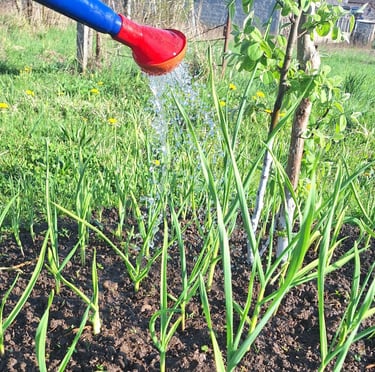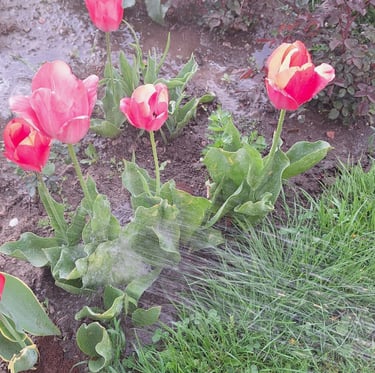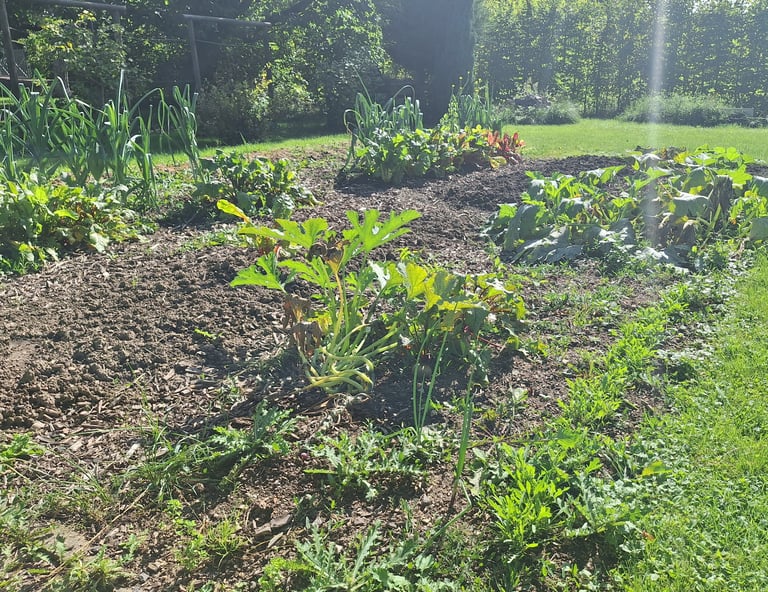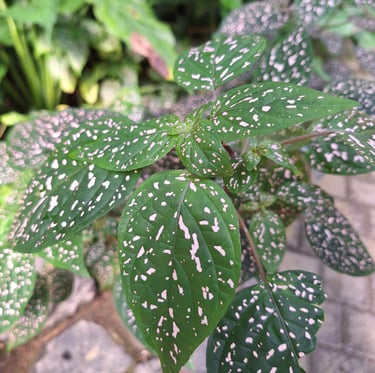Watering Garden Plants: Actionable Step-by-Step Guide
In this actionable step-by-step guide that features real-world experience, we will show you how to water your garden plants correctly. Here is a quick summary:
First start by assessing the soil moisture with a simple finger test, then water deeply in the early morning (ideally with a drip irrigation system or soaker hose) and adjust the frequency based on the plant's specific needs, seasonal changes, and current weather conditions.








Understanding Water Needs
Start by assessing the water requirements of your plants. Different plants have different needs based on their species, size, and stage of growth.
For example, young seedlings need frequent, light watering because their root systems are shallow. Mature plants, especially deep-rooted trees and shrubs, benefit from less frequent but deeper watering which encourages stronger root growth.
Evaluate Your Soil Type
Knowing your soil type is crucial. Sandy soil drains quickly and requires more frequent watering than clay soil, which holds water longer. To test the soil drainage, we dig a hole, fill it with water, and watch how fast it drains. However, we have found that it is very important to adjust the watering schedule of your plant accordingly.


Step-by-Step Watering Guide
Check the Soil Moisture Regularly: Before watering, check the soil moisture. You can do this simply by sticking your finger into the soil up to the second knuckle. After testing this method countless times we found that if the soil feels dry, it’s time to water. If it's moist, wait another day or two.
Water at the Right Time: The best time to water is early in the morning. This reduces evaporation and allows the water to soak deeply into the soil and reach the roots where it's needed most. Morning watering also helps keep the plants dry throughout the day, which reduces the risk of fungal diseases.
Use the Right Tools: Utilize watering tools that match the needs of your plants. Drip irrigation systems are ideal for precise watering directly at the root zone which minimizes waste and evaporation. We saw that for larger areas like vegetable gardens, soaker hoses can provide gentle, thorough watering.
Water Deeply and Thoroughly: Instead of shallow watering, we found that a deep soak benefits the plant more. For most plants, water until the soil is moist at least six inches down. This encourages deep root growth and increases the plant's drought tolerance.
Manage Watering Frequency: How often to water your garden depends on weather conditions, soil type, and plant types. As a general rule, water once a week with enough water to soak the soil deeply. Adjust the frequency based on rainfall and temperature changes.










Special Considerations
Watering Vegetable Gardens: Vegetables are susceptible to watering. Keep the soil consistently moist and use mulch to help retain soil moisture.
Watering When Away: Set up an automatic timer with a drip irrigation system to ensure that your garden stays hydrated when you're not around to water it manually.
DIY Systems: Another method we use every day for our houseplants is DIY automatic watering systems that are built of a large pot with water that connects the soil through a rope to the plant.
Compost Tea: To water plants with compost tea, dilute the tea with water according to recommended ratios and apply it directly to the soil around the base of the plants, avoiding foliage if possible.
Expert tip: Many gardeners think that this method also suppresses plant diseases, but compost tea does not help against plant diseases.
FAQs
What is the best way to irrigate a garden?
The best irrigation method depends on the type of garden, soil, and plants you have. Usually, drip irrigation is highly efficient for both small and large gardens since it delivers water directly to the roots, which minimizes waste and evaporation.
This method is particularly beneficial in areas with water shortages or for gardens that require precise control of watering.
How to water plants while away?
To keep your garden hydrated while you're away, consider setting up an automatic watering system. Drip irrigation with a timer is an effective solution.
Alternatively, you can also use self-watering globes or make a DIY watering system using water bottles like we did. Mulching around the plants before you leave will help retain soil moisture.
What is the most effective watering method for landscape plants?
For landscape plants, especially those in larger or landscaped areas, soaker hoses or drip irrigation systems are the most effective.
These methods allow water to slowly seep into the soil, and reach the without waste through runoff or evaporation. They are ideal for maintaining consistent moisture levels and can be adjusted based on specific plant needs.
Conclusion
Watering your garden efficiently requires more than just turning on a hose. It requires understanding the unique needs of each plant and the conditions they are growing in.
By following this step-by-step guide which we have successfully tried and tested, you can optimize your watering practices to ensure a lush, productive garden. Remember, effective watering is key to the health of your garden plants and can significantly affect your garden’s success.
Sources
Nature and Sustainability uses only high-quality sources, including peer-reviewed studies to support the facts we describe in our articles. Please read our editorial policy to learn more about how we keep our content accurate, reliable, and trustworthy.
Clay Soil and watering: Understanding Clay Soil (thespruce.com)
Drought tolerance in correlation with watering: Drought Tolerance - an overview | ScienceDirect Topics
DIY watering systems: DIY garden watering system ideas | (homesandgardens.com)
General information and facts on watering plants: How Plants Use (wvu.edu), How to Water a Garden (purdue.edu), Watering the vegetable garden | UMN Extension, Watering Tips (iastate.edu), Best Practices for Watering Yards and Gardens – Wisconsin Horticulture, The Best Time to Water (marthastewart.com),
Share this article:




Article By:
Calin has been in the garden industry for 5 years and knows a lot about gardening and plants. He is the founder of this website and is responsible for most of the content.
Reviewed By:


Helga has been fascinated with plants since childhood and is an avid gardening specialist who grows various plants. She has reviewed and fact-checked multiple articles on this website.

